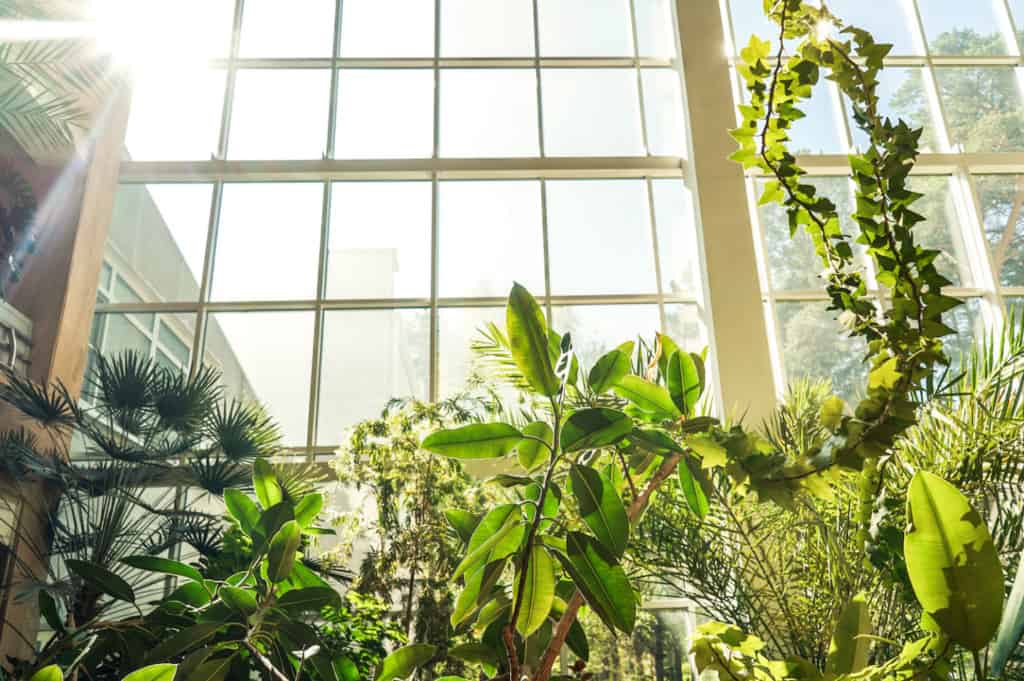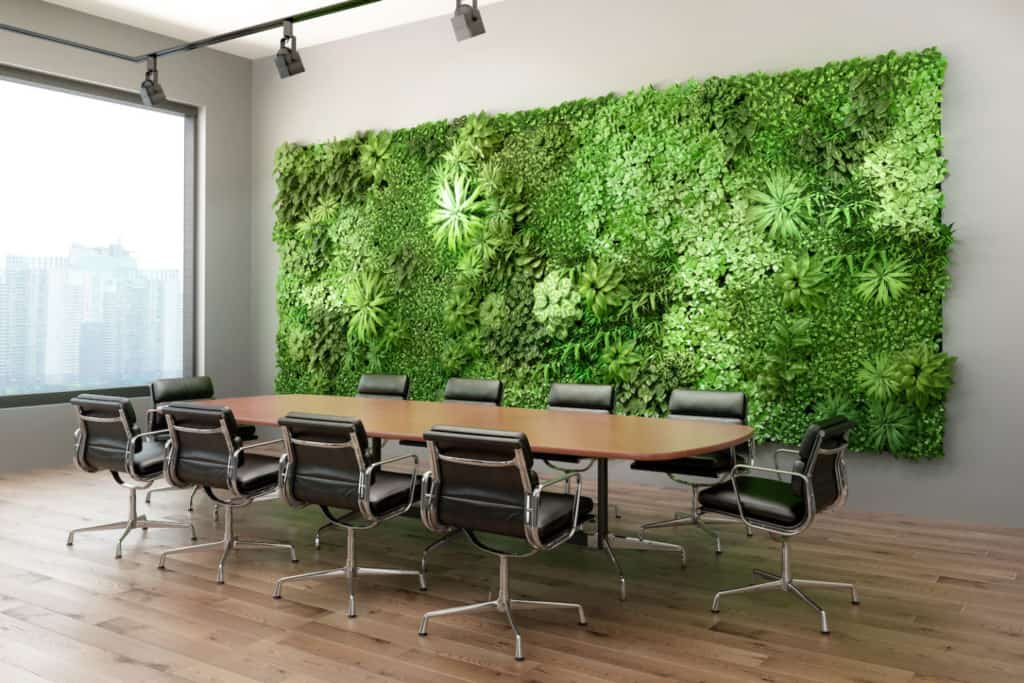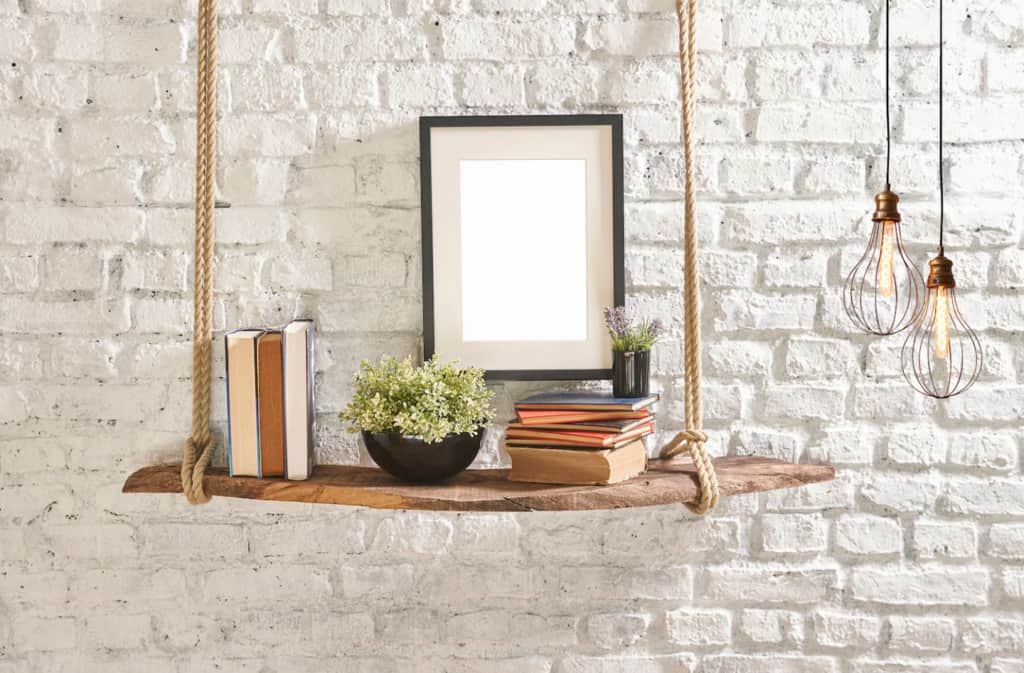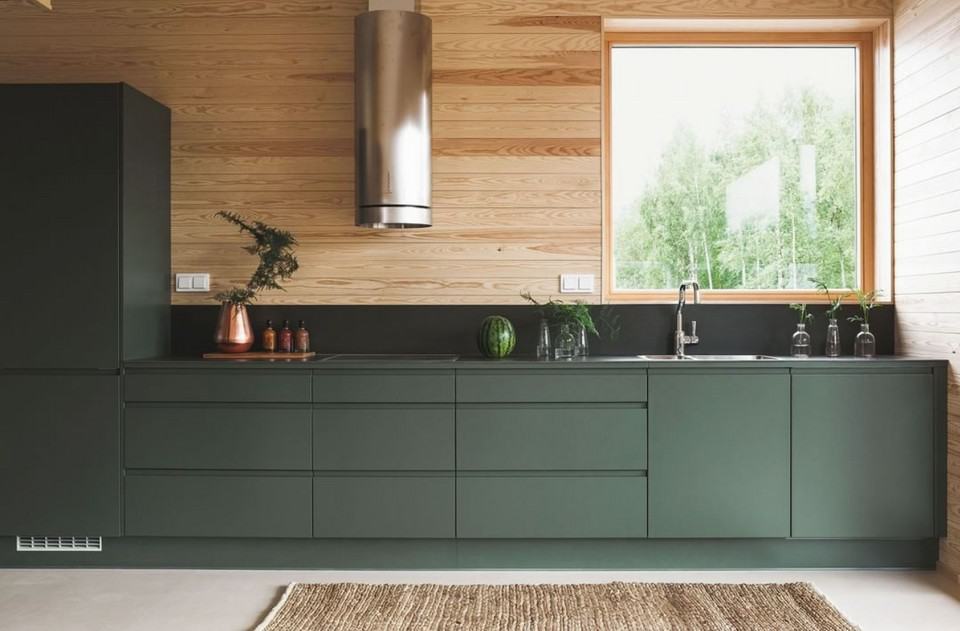What if we told you that there was a design trend that could improve your mental health, creativity, and productivity, all while lowering your stress level? It may sound too good to be true, but biophilic design does just that. How? By using interior design to help you feel more connected to nature—even when you’re indoors. But it’s so much more than that. In this guide, we will discuss biophilic design and how to use it in your own space.
Table of Contents
What is Biophilic Design?
In interior design and architecture, biophilic design is a concept that’s all about building connections with nature and embracing the positive health benefits that come with that.
But biophilic design goes beyond just having some plants or floor-to-ceiling windows in your office or home. It’s more of an integrating and intermingling nature and nature-inspired elements into your space. And it can include both direct and indirect experiences of nature.
Direct experiences can be the use of raw natural materials, greenery, or natural light in a space, while indirect experiences involve representations of nature in your space—through artwork, furniture shapes, and colors.
What are the Benefits of Biophilic Design?
It’s a proven fact that when you spend time in nature, your body’s cortisol levels drop and you feel more relaxed. Nature has a positive impact on both your physical and mental health. But what happens when you don’t have time to go on a hike or even spend meaningful time outside each day? That’s where biophilic design can help.
The biophilic design approach not only creates a beautiful living environment, but it also tends to go hand-in-hand with sustainability. By creating spaces that incorporate biophilic design, designers are challenged to come up with more eco-friendly alternatives to construction materials, cabinets, and furniture. This tends to lower toxins like VOCs in a space, which has a positive impact on health and well-being.
Other benefits of biophilic design include:
- Reducing stress
- Increasing productivity, creativity, and clarity of thought
- Offsetting carbon emissions
- Fostering a connection with nature
- Improving wellness/well-being
- Improving indoor air quality
There are many ways you can start incorporating biophilic design into your home or office. If you’re looking for some inspiration, we’ve put together a few of our favorite biophilic design elements below.
What Defines Biophilic Design?
There are a few elements that biophilic design certainly must have to work well and reap the benefits of this innovative design. First, there are three main categories that define biophilic design:
1) Direct Presence of Nature in the Space
2) Natural Materials and Analogues
3) Spatial Design Elements Commonly Found in Nature
There are many ways you can start incorporating biophilic design into your home or office. If you’re looking for some inspiration, we’ve put together a few of our favorite biophilic design elements below.
What Elements Make Up Biophilic Design?
Now that you know the goal and the patterns of biophilic design, you may be wondering what it looks like in a real-life setting? There are about a dozen tried and true ways to integrate biophilic design in a space.
Include Easy-to-Care-For Plants
The most simple and cost-effective way to create a more biophilic space is to incorporate some plants into a space. Some plants are ideal for indoors or in low light, such as snake plants, aloe, or pathos. It’s incredible how much these can liven up a space and help reconnect people to nature by caring for the plants.
If your space has more windows and great natural light, level up your plant game with umbrella trees, dracaena trees, string of pearls, or jade plants. When the light hits their beautiful green leaves, it can boost mood, bring color to the space, and make it seem less dreary.

Opt for Curved Lines and Soft Edges
Nature is not where you’ll find sharp edges and straight lines. If you look at a forest, it’s a series of twisting and turning vines and branches and wildness. Biophilic design aims to mimic the patterns of nature in the design. This might be round desks, curved structures, a soft wallpaper pattern, or curvy edges on tables and other decor.
Sharp corners and stark contrasts are much more present in man-made environments. The soft edges can curb this effect and make the space much more comfortable and workable.
Consider a Living Wall
We love to see a living green wall. Living walls are just what they sound like— a wall that incorporates greenery, plants, vines, etc., from the floor to the ceiling. Imagine you have an office lobby with very high ceilings and maybe one large wall. That big white wall makes it feel cold and sad, but a living wall brings the space to life!

Utilize Nature-Themed Art and Decor
Incorporating nature-themed art or decor is another way to bring biophilic design into your space. This might be anything from a serene landscape painting to a sculpture made out of recycled materials.
One example we love is using driftwood in vases or as part of wallhangings. The shapes and curves of the wood give a natural element to the space and soften it.
Increase Natural Light in the Space
If you can’t install more windows or skylights, simply removing any window coverings like blinds or curtains can help massively increase the amount of natural light coming in. And studies show that nearly 78% of employees say access to natural light in the workplace improves their wellbeing, productivity, and work performance.
It’s been said that following the natural progression of light throughout the day can also help with sleep patterns, boost mood, and fight off symptoms of seasonal depression.
Use Natural Materials
Plenty of biophilic design is all about bringing the outdoors inside. And one way to do that is by using natural materials. This might be anything from bamboo flooring to a stone coffee table.
Another way to bring nature into your space is by using reclaimed wood in your decor or furniture. We’ve also seen great use of wood pallets, boxes, or even weaved chairs and furniture. Anything that feels like it could be made from anything found in nature is vital to completing the components of biophilic design.

Play Nature Sounds
For an even more zen space, playing nature sounds and lighting essential oil diffusers can add an overwhelming calm to the space. It can give the room “good vibes,” as the young kids say.
Spotify, Amazon Music, and Pandora have playlists that can play hours upon hours of nature sounds or waterfalls— anything you want to bring good energy and vibes to the space. This alone can help alleviate stress and worry, which in turn can boost work performance and productivity.
Install Skylights, Sliding Doors, and Large Windows
This might be more ideal for new construction, but if you can ensure windows and doors are put in place to quickly and easily tie the indoors to the outdoors, you’ll be so happy you did. A skylight can bring in natural light all day long. Large sliding glass doors to a patio can mean getting tons of fresh air and getting in touch with nature throughout the workday. Getting fresh air is vital to separating oneself from the stressors of work and can recalibrate your body.
Introduce a Water Feature
Another biophilic design element you can bring into your space is a water feature. This could be anything from a desktop fountain to a large koi pond (if you have the outdoor space). The sound of running water is incredibly soothing and can help people feel more relaxed and calm.
Create An Outdoor Workspace
And finally, if you really want to commit to biophilic design, create an outdoor workspace. This might mean setting up a few desks near a window with a great view or putting some Adirondack chairs on the lawn for people to work from.
The idea is that by being in nature, even if it’s just for a few minutes, you can help improve your mood and work performance.
So there you have it! Biophilic design in a nutshell. Be sure to incorporate as many of these elements as possible to create the most productive, happy space for yourself and your employees.
Bringing Biophilic Design Into Your Home
The workspace and corporate buildings are not the only places you can incorporate biophilic design elements. You can utilize the same natural materials at home in your decor, layout, and interior design. You can even make a biophilic kitchen with natural kitchen cabinets that facilitate a beautiful, inviting space.
At Puustelli, we strive to bring those natural elements into every kitchen we design. We believe that being one with nature is similar to being one with your food and what you consume. And in a space like your kitchen, you want this to ring true. If you’re interested in incorporating those natural design elements into your home kitchen, reach out to Puustelli today!

